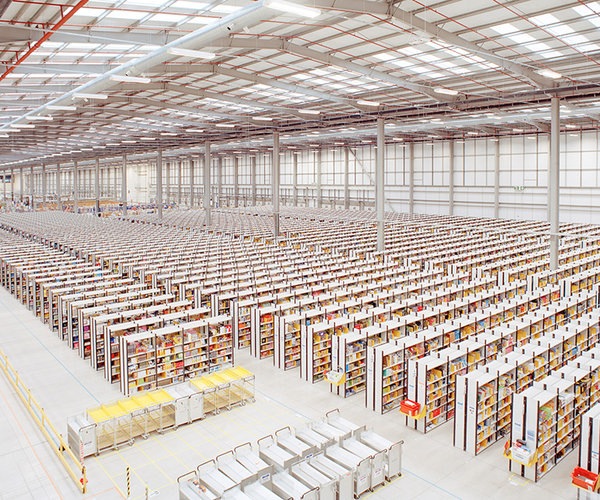
Photograph by Ben Roberts
From Portrait of Amazon Fullfilment Center, in FastCo Design
When I pay a bit extra for organically grown tomatoes, I know why. When I pay a bit extra for a pair of Nudie jeans, It feels right. When I buy a pair of Crockett and Jones, in 2 years I’m reminded of why.
Many premium prices are strategically and purposefully explained and charged with answers to questions of “why” and “for what”. Quite simply premium brands. The tomatoes are better for me, that feels comforting. The jeans say something about me, which I feel I need for some reason I probably can’t explain very well.
“When you buy something from an independent retailer, you might pay more than Amazon, but that extra bit is an investment,” Roberts explains. “When you pay it, you’re investing in the quality of not only your own life but the life of the community around you.”
– Ben Roberts
But premium prices (can) also do something for others. All businesses impact greater society and hence our purchase decisions. This portrait of an Amazon Fullfilment Center so vividly shows the backside, if you will, of everything that I love with Amazon.
It would feel so much better knowing that only robots were hurt, while paying the lovely low prices, enjoying the frictionless delivery and follow-up of the many books that I buy.
I admit that I feel a bit better when I’m reminded every month of the village and child that I support. But the thing is, of course, that we support (or not) individuals, communities and society in every purchase decision but it’s all invisible.
In a world of increasingly quick and rich feedback loops, personal data, interconnected systems, transparency and information accessibility – I’m waiting for better ways of reminding me of the invisible back-end of the products I buy. In context. Not by way of bi-yearly reports on worker conditions in developing countries and/or what’s happening to our farmers seen as we’ve never payed less, proportionately, for food than today.
I want a friggin connected dashboard on the tomato cans I buy. How’s the farm doing?

